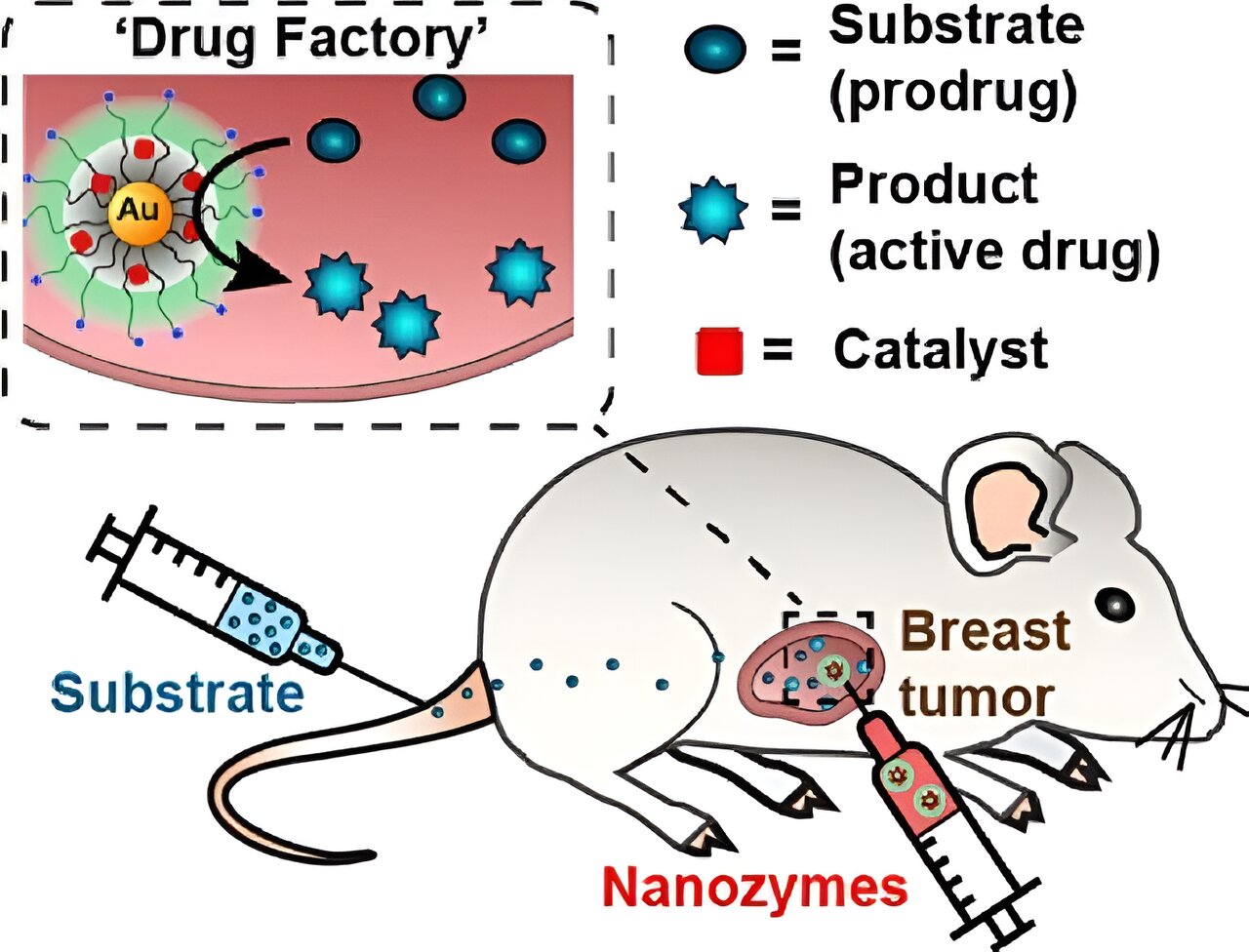Nanozymes drive tumor-specific drug delivery while minimizing toxicity
Date: 16.8.2023
Chemotherapy is a mainstay of cancer treatment. While effective, this therapy indiscriminately kills rapidly dividing cells – cancerous or otherwise – so patients frequently experience severe side effects, ultimately limiting its utility.
 But what if there was a way to administer an inactive chemotherapeutic throughout the body and 'turn on' the drug inside of a tumor? This strategy could limit side effects while potentially allowing for higher-dose (and more effective) treatments.
But what if there was a way to administer an inactive chemotherapeutic throughout the body and 'turn on' the drug inside of a tumor? This strategy could limit side effects while potentially allowing for higher-dose (and more effective) treatments.
Enter nanozymes. These artificial enzymes, composed of nanomaterials, can carry out pre-determined chemical reactions, such as converting an inert drug (or prodrug) into its functional form. If injected into a tumor and exposed to a prodrug, nanozymes could become localized 'drug factories,' selectively activating a cancer drug within the tumor while minimizing damage to healthy tissues.
Bioengineers and chemists at the University of Massachusetts Amherst (UMass Amherst) have developed a nanozyme that can turn an inactive form of fluorouracil, a commonly used chemotherapeutic, into its active form. When evaluated in a mouse model of breast cancer, their treatment could shrink tumors just as effectively as standard fluorouracil chemotherapy with significantly less liver damage.
Image source: Zhang et al. (2023), Journal of Controlled Release.























